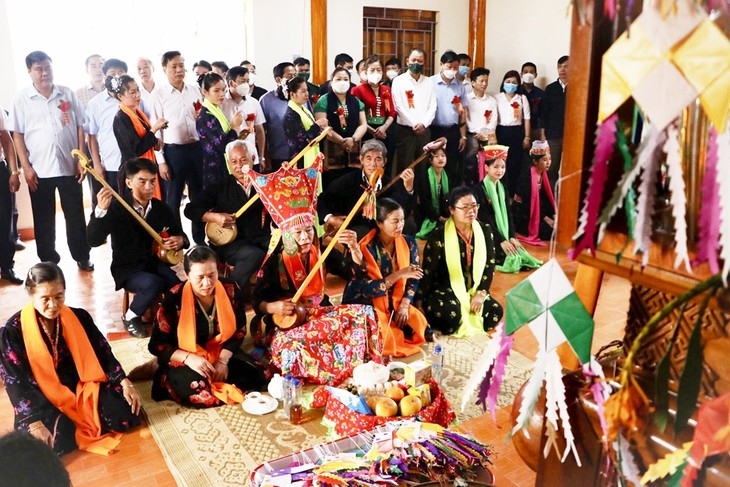Kin Pang Then ritual of the White Thai in northwestern region
VOV.VN - Kin Pang Then is one of the important folk rituals of the White Thai ethnic minority in northwestern provinces.

The festival celebrates the adopted children of the shamans.
Each village of the White Thai in the provinces of Son La, Lai Chau, and Dien Bien usually has a few shamans and sorcerers, who are called the Then masters.
They are ordinary people, who are fluent in prayers and worship practices. Residents trust and honor them as Heaven’s representatives sent to earth to save people from illness and disease. The Then masters can adopt the people they save.
Lo Van Xoi of Lai Chau province shared, “The Then masters often have adopted children. When a Then master has over 20 adopted children, he or she will organize a Kin Pang Then ritual every three years.”
Mao Van Et of Dien Bien Phu City said that nowadays sick people go to the hospital for treatment, but they still invite a Then master to their house to worship as psychological therapy.
“The other function of a Kin Pang festival is to gather all villagers to have fun in the spring. The ritual is conducted by the Then master. The festival is organized by art troupes and the villagers to share the joy.”
The Then masters organize the Kin Pang ritual every 2 to 3 years to meet their adopted children. Thai man Hoang Van Chiem said, "The Kin Pang Then ritual is often held on the New Year festival. A Then master gathers his or her adopted children to attend the ritual and then have a party.”
“The Kin Pang Then ritual is held at home or at the communal house. It can be held coinciding with a crop worshiping ceremony. The shamans pray that their adopted children will be healthy and have successful businesses. Each adopted child brings a chicken or a bottle of liquor to the shaman’s house and burns incense on the altar to pray for peace,” Khoang Van Giong, a Thai man, said.
To prepare for the ceremony, the Then master’s altar is decorated with flowers and colorful pieces of papers. The offerings should have pork, chicken, liquor, incenses, cakes, and fruits. The altar has 3 levels dedicated to different gods, said Mao Van Thinh of Dien Bien province.
“The first level is dedicated to the deities and shamans. The second level is also reserved for deities where people offer pork and chicken. The lowest level worships the Heaven and Earth Gods and prays for the blessings.”
The Then master reads the prayer, which sounds similar to a traditional Then song with the backdrop of the pi panpipe, the Tinh musical instrument, and cymbals, asking for all good things, including health, prosperity, favorable weather, and bumper crops for the villagers. After the ceremony, people play folk games, dance, and sing joyfully.

